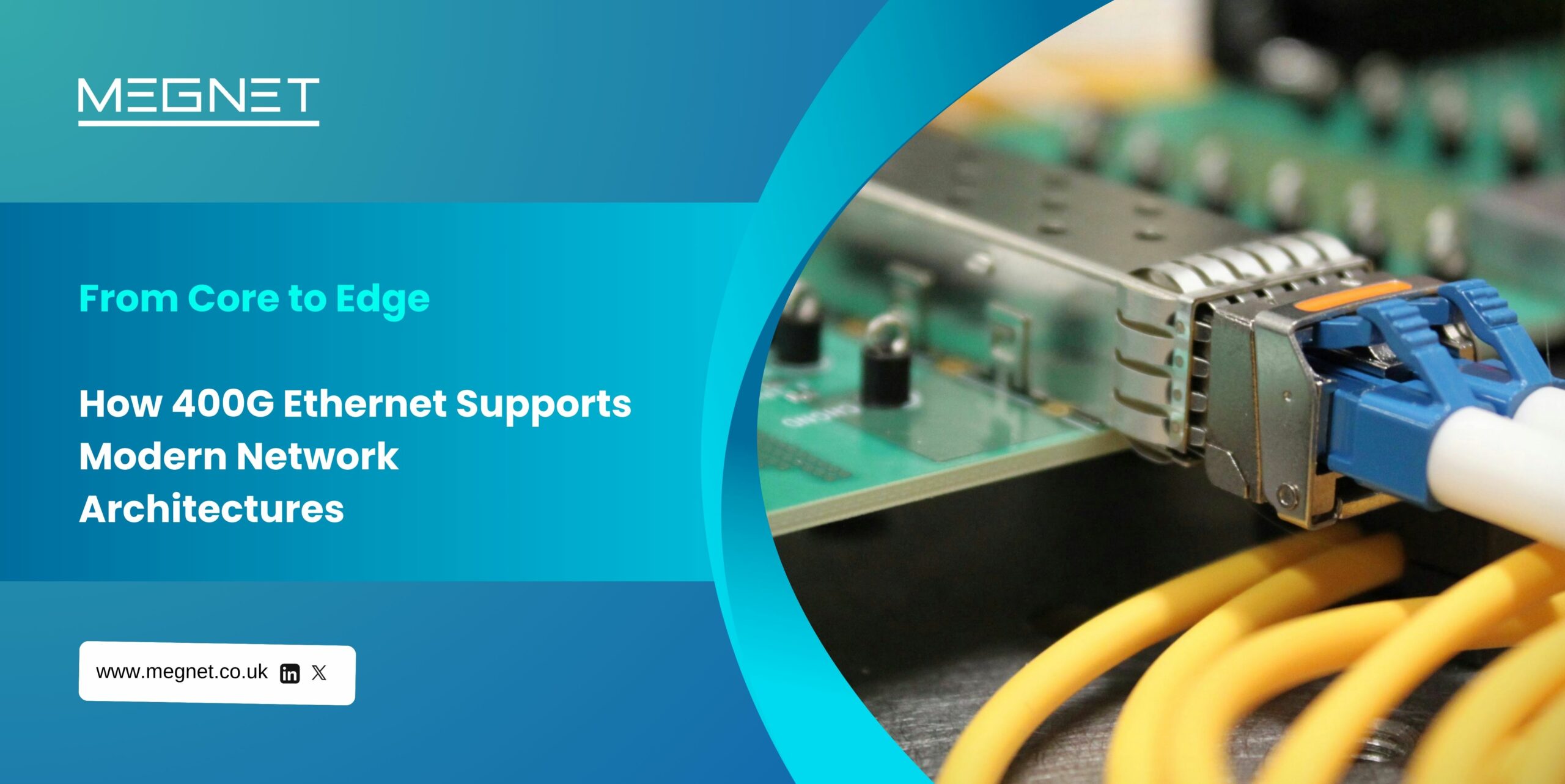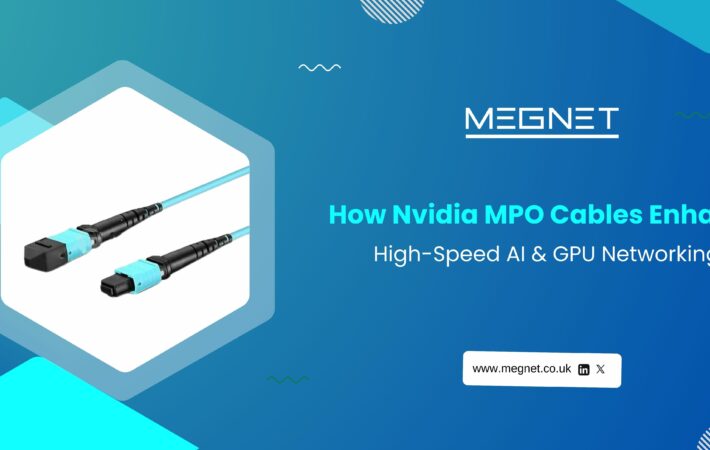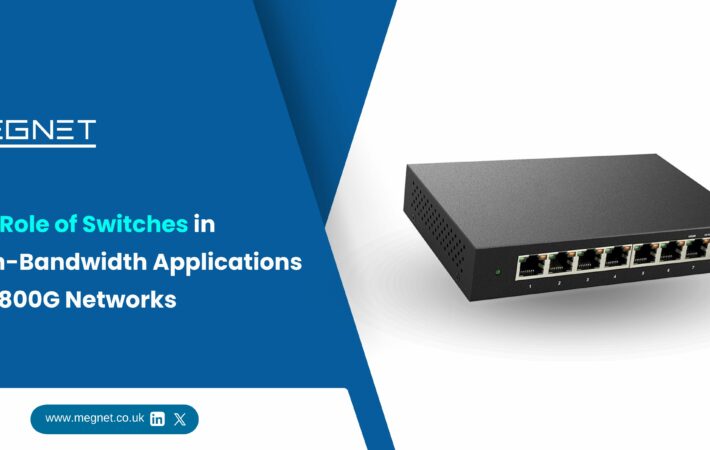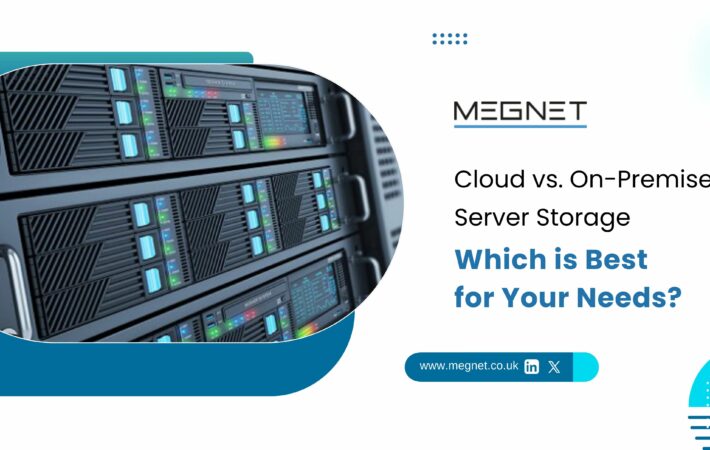Is Your Network Ready for the Power of 400G Ethernet?
The relentless growth of data-driven services, cloud applications, and the Internet of Things (IoT) has put immense pressure on network infrastructure to deliver faster, more reliable connectivity. Modern networks must balance performance, scalability, and efficiency across core, metro, and edge layers. At the heart of this evolution lies 400G Ethernet, a groundbreaking technology poised to redefine how we approach network architecture.
In this comprehensive guide, we’ll explore how 400G Ethernet supports modern network architectures, highlighting its transformative capabilities through key technologies like 400G PAM4 modulation, DWDM networks, and advanced solutions like QSFP-DD transceivers. We’ll also delve into its role in network scaling, bandwidth optimization, and enabling long-haul 400G transmission, all while addressing critical challenges with Forward Error Correction (FEC).
The Growing Demand for 400G Ethernet in Modern Networks
A Surge in Data Demand
The explosion of data-intensive applications like video streaming, AI workloads, and 5G networks has placed unprecedented demand on network backbones. Enterprises, data centers, and telecom operators are under pressure to scale their networks efficiently without compromising latency or reliability. This is where 400G Ethernet emerges as the ideal solution.
Why 400G Ethernet?
400G Ethernet delivers four times the bandwidth of its predecessor, 100G Ethernet, enabling it to accommodate the exponential growth in traffic. Its benefits include:
- Increased capacity: Supports higher data rates per wavelength.
- Energy efficiency: Reduced power consumption per bit compared to lower-speed Ethernet.
- Scalability: Seamless integration into existing and new network architectures.
Core to Edge: The Role of 400G Ethernet in Modern Architectures
Core Networks
Core networks serve as the backbone of global connectivity, linking data centers and large-scale metro networks. 400G Ethernet enables the consolidation of multiple 100G links into a single 400G link, simplifying network design and reducing operational costs.
400G PAM4 modulation is a critical enabler here. By encoding more data per symbol, PAM4 modulation effectively doubles the transmission capacity without increasing the channel bandwidth. This technology ensures high-performance data transfer, even in high-density environments.
Metro Networks
Metro networks require flexibility to handle diverse traffic patterns and varying bandwidth needs. With DWDM networks, operators can leverage 400G Ethernet to transmit multiple 400G signals over a single optical fiber, optimizing capacity and minimizing infrastructure costs.
Edge Networks
The edge is where latency-sensitive applications like AR/VR, IoT, and autonomous vehicles demand high bandwidth and low latency. 400G Ethernet’s ability to provide high-speed connectivity closer to end users makes it an ideal solution for edge deployment, ensuring seamless user experiences.
Technologies Powering 400G Ethernet
- 400G PAM4 Modulation
PAM4 modulation is a revolutionary encoding scheme used in 400G Ethernet. Unlike traditional NRZ (Non-Return to Zero) encoding, which transmits one bit per symbol, PAM4 transmits two bits per symbol. This innovation allows:
- Higher data rates on existing channels
- Reduced complexity in optical and electrical designs
- Improved spectral efficiency
- Forward Error Correction (FEC)
As data rates increase, so does the potential for errors in transmission. FEC is an advanced error-correcting code that detects and corrects errors in real time, ensuring data integrity in 400G Ethernet networks. It is particularly critical for long-distance and high-density deployments, where signal degradation can compromise performance.
- QSFP-DD Transceivers
The Quad Small Form-Factor Pluggable Double Density (QSFP-DD) transceivers are a cornerstone of 400G Ethernet. They offer:
- Compact form factors for high-density data centers.
- Support for hot-swappable designs, enhancing network flexibility.
- Compatibility with both single-mode and multimode fibers for diverse deployment scenarios.
- DWDM Networks
Dense Wavelength Division Multiplexing (DWDM) is a game-changer for 400G Ethernet. By transmitting multiple wavelengths over the same fiber, DWDM networks maximize the utilization of existing optical infrastructure. This is essential for long-haul 400G transmission where high capacity and reliability are critical.
Benefits of 400G Ethernet for Modern Network Architectures
- Network Scaling Made Simple
Scaling traditional networks often involves complex upgrades, but 400G Ethernet simplifies the process by consolidating traffic onto fewer, high-capacity links. This approach reduces the number of switches and routers needed, lowering capital and operational expenditures.
- Bandwidth Optimization for High-Density Applications
Data centers, cloud providers, and telecom operators often face bandwidth constraints in high-density environments. 400G Ethernet, with its enhanced throughput and optimized use of DWDM networks, ensures efficient bandwidth utilization, reducing bottlenecks and improving overall network performance.
- Enhanced Long-Haul 400G Transmission
For intercontinental connections and long-distance networks, 400G Ethernet leverages advanced optical technologies like coherent optics to achieve seamless long-haul 400G transmission. These solutions maintain performance even over thousands of kilometers, making them indispensable for global operators.
- Future-Proofing Network Investments
Investing in 400G Ethernet ensures compatibility with future technologies like 800G and beyond. Its modularity and flexibility allow businesses to scale as demands grow, protecting investments and ensuring long-term sustainability.
Use Cases of 400G Ethernet
- Hyperscale Data Centers
Hyperscale operators like Google, AWS, and Microsoft require ultra-high-speed connectivity to manage petabytes of data daily. 400G Ethernet, supported by QSFP-DD transceivers, offers the scalability and efficiency needed to meet these demands.
- Telecom and 5G Networks
Telecom operators are transitioning to 5G, which demands higher speeds and lower latency. 400G Ethernet provides the backbone for 5G networks, supporting fronthaul, midhaul, and backhaul connections with ease.
- Cloud and Content Delivery Networks (CDNs)
Cloud services and CDNs rely on bandwidth optimization to deliver content seamlessly across geographies. 400G Ethernet, with its ability to handle massive data loads, ensures reliable performance and minimal latency for end users.
Challenges in Adopting 400G Ethernet
- Higher Initial Costs
Deploying 400G Ethernet requires investment in new infrastructure, including switches, routers, and optical modules. However, the long-term cost savings from improved efficiency and reduced maintenance often outweigh these upfront costs.
- Complexity in Transition
Migrating from legacy systems to 400G Ethernet can be challenging, especially for enterprises with extensive existing networks. A phased deployment strategy, starting with high-demand areas, can ease the transition.
- Power and Cooling Requirements
Higher data rates mean increased power consumption and heat generation. Addressing these challenges requires innovations in cooling systems and energy-efficient designs.
The Road Ahead: 400G Ethernet and Beyond
The adoption of 400G Ethernet is not just a response to current demands but a strategic move toward future-proofing network infrastructures. With technologies like 400G PAM4 modulation, QSFP-DD transceivers, and DWDM networks, it sets the stage for seamless migration to even higher speeds like 800G and 1.6T Ethernet.
Enterprises and service providers embracing 400G Ethernet today are positioning themselves to lead in a digital-first world. By enabling network scaling, optimizing bandwidth, and ensuring reliable long-haul transmission, 400G Ethernet is bridging the gap between today’s demands and tomorrow’s possibilities.
Emerging Trends Complementing 400G Ethernet
The deployment of 400G Ethernet doesn’t exist in isolation; it coincides with several key trends shaping modern networking. Let’s explore how these trends align with and amplify the benefits of 400G Ethernet.
- The Rise of Software-Defined Networking (SDN)
SDN enables dynamic network management by decoupling the control plane from the data plane. 400G Ethernet’s high capacity and flexibility integrate seamlessly with SDN platforms, allowing operators to manage network resources more effectively and scale on demand. This synergy ensures improved bandwidth utilization and agility in addressing traffic surges.
- Edge Computing Integration
As businesses adopt edge computing to process data closer to the source, the need for high-speed, low-latency connections grows. 400G Ethernet acts as the bridge between core data centers and edge sites, ensuring rapid data exchange and optimal performance for applications requiring real-time processing.
- Artificial Intelligence and Machine Learning
AI and ML applications require extensive data processing and storage. With its ability to handle high-bandwidth, low-latency demands, 400G Ethernet supports distributed AI workloads, ensuring seamless communication between compute nodes and storage arrays.
Advanced Features in 400G Ethernet Hardware
- Smart Transceivers
Modern QSFP-DD transceivers are evolving with intelligent features such as diagnostic monitoring interfaces (DMI). These capabilities allow real-time monitoring of key parameters like temperature, power, and signal quality, ensuring proactive maintenance and reducing downtime in 400G Ethernet networks.
- Flexible Deployment Options
400G Ethernet devices now support a range of configurations, including breakout options (e.g., splitting a 400G link into 4x100G connections). This flexibility enables incremental upgrades, allowing organizations to scale gradually while preserving existing infrastructure investments.
Environmental Impact of 400G Ethernet
While 400G Ethernet delivers unmatched performance, it also supports greener operations:
- Energy Efficiency: Compared to deploying multiple lower-speed links, 400G Ethernet consumes less power per bit, aligning with sustainability goals.
- Optimized Infrastructure Use: Technologies like DWDM networks reduce the need for additional physical fiber deployment, lowering environmental impact.
- Recyclable Hardware Designs: Many 400G Ethernet components are designed with recyclable materials, contributing to a circular economy.
Industry Case Studies: 400G Ethernet in Action
- Hyperscale Data Centers: Scaling Efficiently
A leading cloud service provider recently deployed 400G Ethernet across its global data centers. By replacing multiple 100G links with 400G connections, the provider achieved a 35% reduction in operational costs while improving bandwidth availability for its AI and machine learning applications.
- Telecom Provider: Long-Haul Transmission
A major telecom operator adopted 400G Ethernet for its intercontinental backbone. By leveraging DWDM networks and Forward Error Correction, the company successfully transmitted 400G signals over 2,500 kilometers without signal degradation, ensuring seamless connectivity for its 5G services.
- Edge Deployment in Healthcare
A hospital network implemented 400G Ethernet to support its edge computing requirements. This upgrade enabled real-time imaging analysis for radiology departments, reducing diagnosis times and enhancing patient care.
Practical Tips for 400G Ethernet Deployment
- Assess Network Traffic Patterns: Before deployment, analyze your network’s traffic to identify bottlenecks and prioritize high-traffic areas for upgrades.
- Choose Compatible Components: Ensure your existing infrastructure supports 400G Ethernet hardware like QSFP-DD transceivers and DWDM solutions.
- Plan for Scalability: Select equipment with future-proof capabilities, such as breakout ports and modular configurations, to accommodate 800G or higher upgrades.
- Implement Robust FEC Systems: Invest in advanced FEC technologies to maintain data integrity, especially for long-haul transmission.
- Test Before Deployment: Conduct rigorous testing in a lab environment to identify potential challenges and fine-tune configurations.
Breaking Barriers with Optical Innovations
Advancements in Coherent Optics
Coherent optical technologies are transforming long-haul 400G transmission. By leveraging phase modulation and advanced signal processing, coherent optics extend the reach of 400G Ethernet while maintaining high performance.
Pluggable Optics for Flexibility
The rise of pluggable coherent optics, such as those used in DWDM networks, simplifies the deployment of 400G Ethernet. These modules enable operators to implement high-speed links without overhauling their existing infrastructure.
Advanced Signal Processing Techniques
One of the key enablers of 400G PAM4 modulation is the evolution of signal processing algorithms. Unlike traditional NRZ (Non-Return-to-Zero) modulation, PAM4 transmits two bits per symbol, effectively doubling the data rate without increasing the bandwidth requirement. However, this introduces challenges such as reduced signal-to-noise ratio (SNR), requiring robust digital signal processing (DSP) to mitigate errors. Innovations in DSP algorithms allow for precise reconstruction of signals, even under noisy conditions, making PAM4 modulation a cornerstone of 400G Ethernet.
Forward Error Correction (FEC) Enhancements
FEC is crucial in maintaining data integrity for high-speed connections like 400G Ethernet, especially over long distances or in noisy environments. Modern FEC implementations, such as Reed-Solomon coding and low-density parity-check (LDPC) codes, have significantly improved the ability to detect and correct errors. These FEC schemes are optimized for 400G networks to minimize latency while maximizing throughput, ensuring reliable performance across both metro and long-haul deployments.
Thermal Management in High-Speed Transceivers
As the speed of Ethernet increases, so does the power consumption and heat dissipation of the hardware. QSFP-DD transceivers, widely used in 400G deployments, incorporate advanced thermal management solutions, such as heatsinks and active cooling mechanisms. Additionally, manufacturers are leveraging silicon photonics to reduce power consumption and heat generation, enhancing the efficiency of 400G Ethernet systems.
Optical Layer Innovations Supporting 400G Ethernet
Wavelength-Division Multiplexing (WDM)
WDM is a critical technology that enables DWDM networks to support 400G Ethernet. By combining multiple wavelengths onto a single fiber, WDM significantly increases the capacity of optical networks without the need for additional fiber installations. With advancements in WDM, network operators can now achieve higher spectral efficiency, accommodating 400G and beyond on existing infrastructure.
Optical Amplification Technologies
To facilitate long-haul 400G transmission, optical amplifiers such as erbium-doped fiber amplifiers (EDFAs) and Raman amplifiers are employed. These amplifiers boost signal strength across vast distances, compensating for losses incurred during transmission. When combined with coherent optics, these technologies allow 400G Ethernet to maintain signal integrity over thousands of kilometers.
Dispersion Compensation
High-speed optical signals, such as those in 400G Ethernet, are susceptible to chromatic dispersion, which can distort signals and degrade performance. Dispersion compensation modules (DCMs) are integrated into optical networks to counteract this effect, ensuring clean signal delivery. Modern DCMs are optimized for the high data rates and tight tolerances required by 400G Ethernet.
400G Ethernet in High-Performance Compute (HPC) Environments
Low-Latency Architectures
In HPC environments, latency is a critical factor. 400G Ethernet utilizes streamlined packet processing and high-speed optical interconnects to reduce latency, enabling faster communication between compute nodes. This is particularly valuable for applications like real-time simulations and financial modeling.
Scalable Interconnects
HPC systems often require scalable network solutions to accommodate thousands of servers. With network scaling capabilities, 400G Ethernet can be deployed in spine-leaf topologies, providing high-bandwidth connectivity while simplifying network management.
Integration with RDMA Technologies
Remote Direct Memory Access (RDMA) allows servers to access each other’s memory directly, bypassing the CPU to reduce latency. 400G Ethernet supports RDMA over Converged Ethernet (RoCE), enabling ultra-low latency and high throughput for HPC workloads.
Test and Measurement Challenges in 400G Ethernet
Deploying 400G Ethernet requires rigorous testing to ensure optimal performance. Some of the key challenges include:
- Signal Integrity Testing: High-speed links demand precise testing of signal integrity metrics like eye diagrams and jitter. Advanced oscilloscopes and bit error rate testers (BERTs) are used to analyze these parameters.
- Link Performance Validation: Testing equipment must simulate real-world traffic patterns to validate the performance of 400G Ethernet under load.
- FEC Verification: Specialized tools are used to assess the effectiveness of FEC in correcting errors, ensuring reliability over long-haul transmissions.
Innovative Use Cases Leveraging 400G Ethernet’s Technical Capabilities
Smart Manufacturing
In industrial IoT environments, 400G Ethernet supports real-time data exchange between sensors, machinery, and cloud systems. Its high bandwidth and low latency enable predictive maintenance and automation, reducing downtime and improving productivity.
Broadcast and Media
The media industry benefits from 400G Ethernet for live streaming and high-resolution content distribution. Its ability to handle uncompressed 4K and 8K video streams with minimal latency ensures superior quality for both production and distribution.
Scientific Research Networks
Large-scale scientific projects, such as particle physics experiments and astronomical observations, require massive data transfers between research facilities. 400G Ethernet enables these projects to share data seamlessly, accelerating discoveries and collaborations.
Next-Generation ASICs (Application-Specific Integrated Circuits)
At the heart of 400G Ethernet devices are highly specialized ASICs designed for ultra-fast data processing. These ASICs enable:
- Line-Rate Performance: Maintaining throughput at full 400Gbps across all ports without packet loss.
- Low Power Consumption: Leveraging advanced semiconductor processes, such as 7nm or 5nm technologies, to reduce energy usage per bit transmitted.
- Programmability: Modern ASICs support features like dynamic bandwidth allocation and adaptive congestion control, enhancing the flexibility of 400G networks.
Enhanced PHY Layer Integration
Physical Layer (PHY) designs for 400G Ethernet are optimized to support high-speed signal transmission over a variety of media, including copper, fiber, and backplanes. Innovations include:
- Multi-Rate Support: Enabling compatibility with 50G, 100G, 200G, and 400G connections for backward compatibility and seamless upgrades.
- Integrated Clock Recovery Circuits: Ensuring stable signal synchronization across complex network environments.
Power-Efficient Designs in 400G Ethernet
Power Over Ethernet (PoE) in High-Speed Networks
While PoE is traditionally associated with lower-speed applications, 400G Ethernet infrastructure can leverage PoE advancements to power peripheral devices such as edge computing nodes or IoT hubs directly from the network, reducing the need for external power supplies.
Energy-Aware Transceivers
Energy-efficient designs in QSFP-DD transceivers include:
- Low-Power Idle (LPI): Automatically reducing power consumption during periods of low activity.
- Adaptive Power Scaling: Adjusting power output based on link distance, reducing waste in short-reach applications.









Leave a comment
Your email address will not be published. Required fields are marked *